We know foxes well for their colorful fur, playful attitudes, and cunning minds. In fact, they often play the role of a trickster or guide in the folklore of many cultures. Foxes are found throughout the world, and their habitat greatly affects their size and coloration. Let’s take a look at the different fox species and learn just how big these fluffy critters really get.
Types of Foxes and Their Sizes
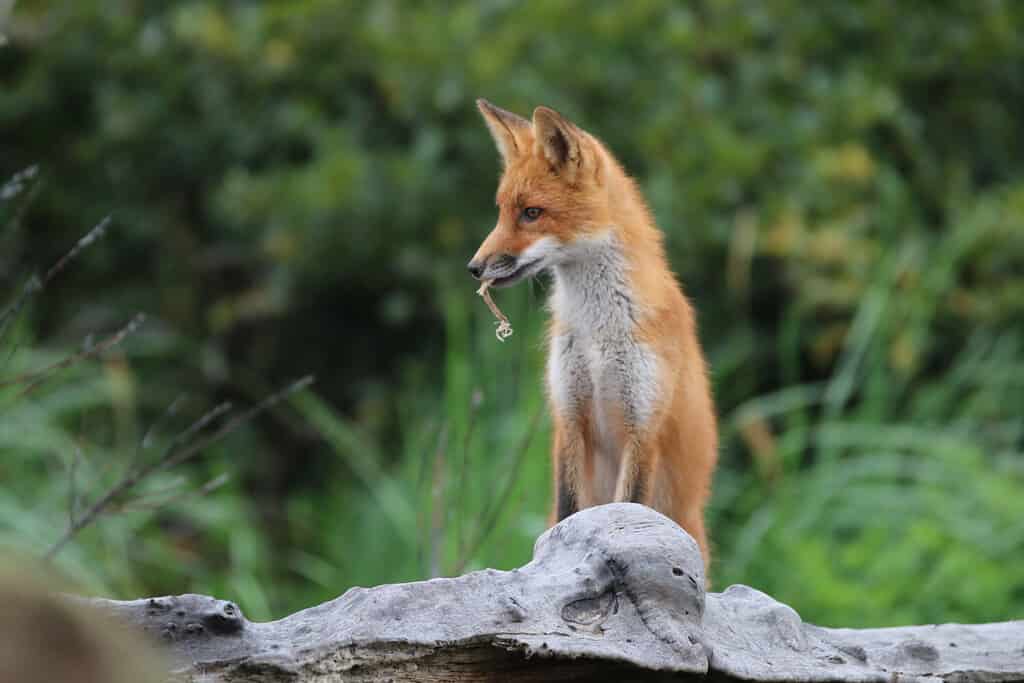
The most recognizable of all fox species is the red fox.
©Ian William Hromada/Shutterstock.com
By some counts, there are over 30 different species of foxes in the world. This number includes a vast array of fox cousins; however, most scientists have settled on about 10 species of “true” foxes. These species are classified in the Vulpes genus and include the most common and recognizable fox of all, the red fox.
This brilliantly colored ambassador of the fox family boasts the largest natural distribution of any other land mammal aside from humans. Red foxes are found just about everywhere except some of the harsher climates dominated by other fox species. Red foxes grow to reach 36 – 42 inches long (more than one-third of which is their tail) and weigh up to 15 pounds. Adult red foxes stand about 16 inches tall at the shoulder, which is roughly the same height as a bowling pin!
The red fox weighs in as the largest member of the fox family and is the main fox we’ll use for our comparisons. Other true members of the fox family include a variety of others spread across the world. Here’s a short description of the other true foxes:
The Bengal fox is native to the Indian subcontinent and features gray and tan fur that’s similar to the coloration of a coyote. They only grow to about 20 inches long and weigh around eight pounds — that’s just slightly larger than a common house cat.
The Blanford’s fox lives in the mountain steppes and deserts of Iran, Pakistan, Afghanistan, and Israel, as well as Central Asia. These small foxes grow to about 16 inches long and up to six pounds.
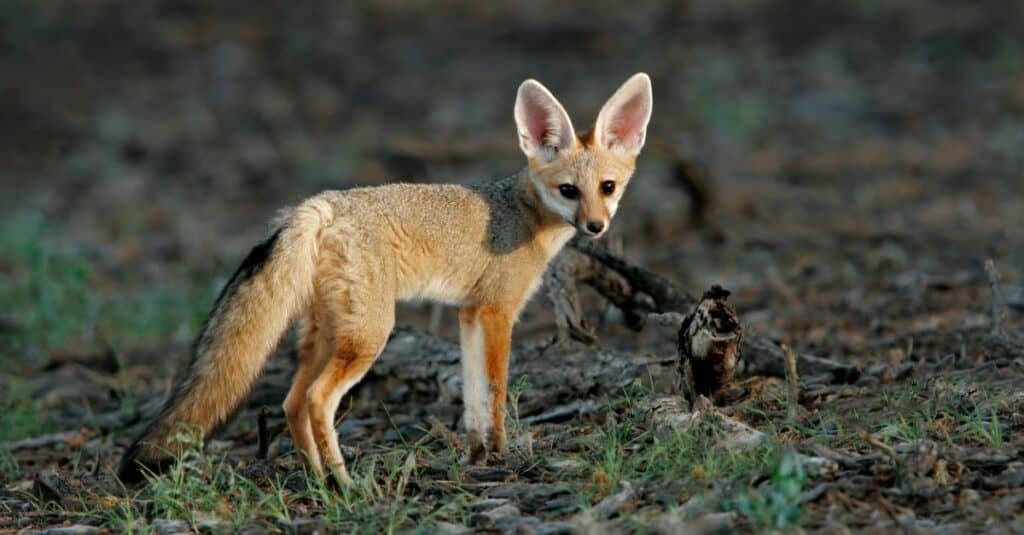
Cape foxes are the only true foxes found south of the equator in
Africa
.
©iStock.com/EcoPic
The Cape fox is sometimes also called the silver-backed fox due to the mottled gray coloration of its back, though the rest of its fur is sand-colored to match its surroundings. The only “true” fox species native to sub-Saharan Africa, the Cape fox lives from Cape Province in South Africa to Angola. The Cape fox stands 13 inches tall, weighs about 11 pounds, and can reach 24 inches in length.
The most social of the fox species, the corsac fox, makes its dens with other individuals in “corsac cities” and forms small hunting packs in the winter. Native to central Asia, the corsac fox lives in Mongolia, Tibet, northern Manchuria, and Afghanistan. Their head appears more wolf-like than vulpine, and they grow to reach about 26 inches long and weigh in at seven pounds.
Tibetan foxes feature short ears and a wide, square-shaped face that’s unusual for a fox. They have thick, red-gold fur that protects them from the fierce winds of the high-altitude Tibetan Plateau. They also live in grassland areas of China, India, and Nepal. The Tibetan fox can reach 28 inches long and weigh up to 12 pounds.

The Tibetan fox’s signature square head sets it apart from other fox species.
©Wang LiQiang/Shutterstock.com
The pale fox features paler coloration than many of its cousins, hence its name. Usually, the pale fox’s bushy tail is just as long as its body, reaching a total body length of 21 inches. They usually weigh between four and eight pounds. The pale fox is one of the least studied of the Canidae species because it blends in so well with its surroundings and lives in remote areas that range from Senegal to Sudan.
Sand foxes live in the deserts of northern Africa and sport very large ears for better hunting abilities in the sand. Though sometimes confused with fennec foxes due to their coloration, sand foxes are much larger. Sand foxes can reach 31 inches long and weigh up to six pounds.
The swift fox lives in the western North American plains and deserts. These big-eared foxes are shy and uncommon, and they are also the smallest canid found in North America. They only weigh about seven pounds, stand 12 inches tall, and reach 25 inches long.
The fennec fox holds the title of smallest fox — weighing just three pounds and reaching up to 20 inches long. However, this fox’s most distinctive features are its almost comically large ears, which can reach up to six inches tall. So big for its tiny body, the ears evolved to help the fennec fox hunt burrowing prey in its sandy North African habitat.
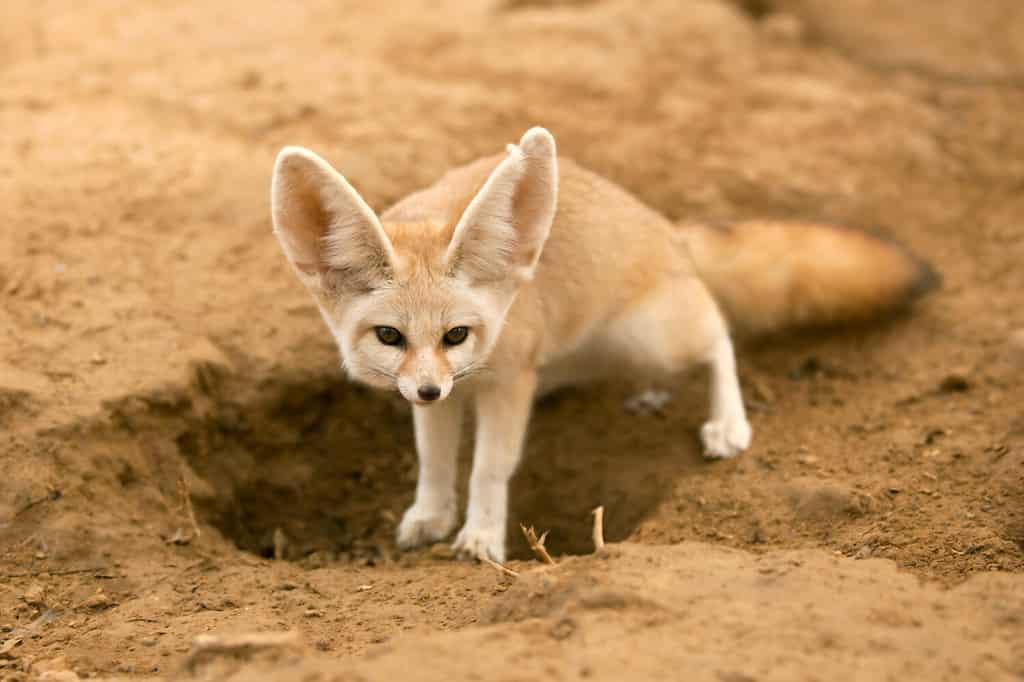
The fennec fox is the smallest of the fox family.
©hagit berkovich/Shutterstock.com
That’s a lot of foxes! Here’s a quick chart that lists their sizes:
| Fox Species | Length | Weight |
|---|---|---|
| Red fox | 42 inches | 15 pounds |
| Bengal fox | 20 inches | 8 pounds |
| Blanford’s fox | 16 inches | 6 pounds |
| Cape fox | 24 inches | 11 pounds |
| Corsac fox | 26 inches | 7 pounds |
| Tibetan fox | 28 inches | 12 pounds |
| Pale fox | 21 inches | 8 pounds |
| Sand fox | 31 inches | 6 pounds |
| Swift fox | 25 inches | 7 pounds |
| Fennec fox | 20 inches | 3 pounds |
How Big Are Foxes When They Are Born?
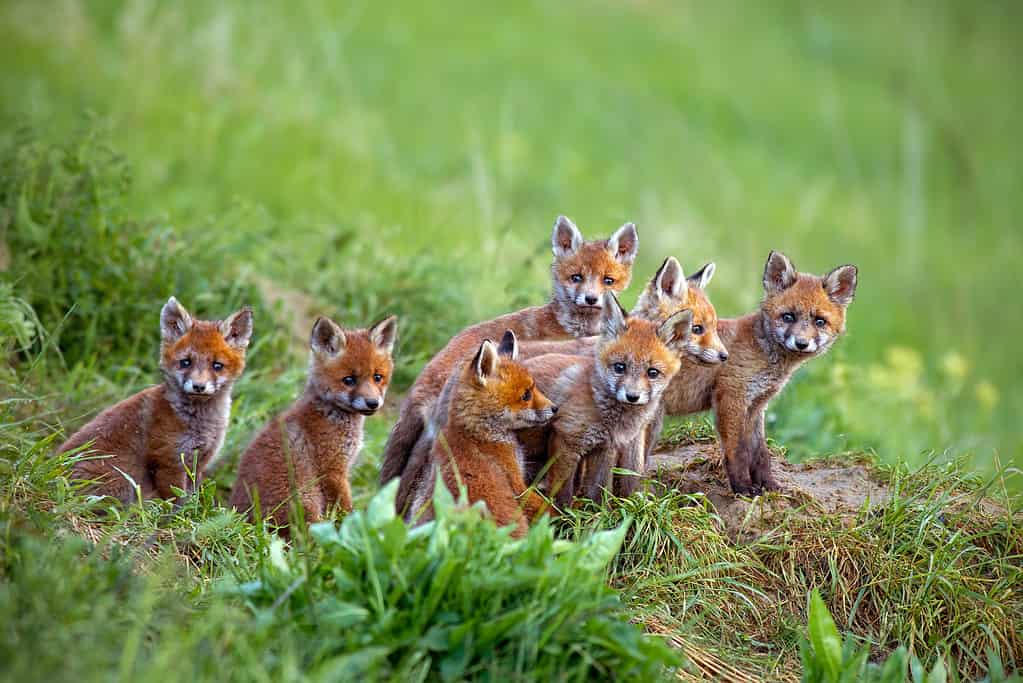
Red fox pups generally weigh under a pound when they’re born.
©JMrocek/ via Getty Images
Baby foxes — called pups, or sometimes kits or cubs — are born in the early spring. Adult foxes generally mate for life, though the parents don’t necessarily spend a lot of time together. The size of a fox pup depends greatly on its species.
For red foxes, pups weigh just 100 grams (or 0.06 pounds) and measure a little over four inches, which is about the length and weight of a standard stick of butter. So tiny! The pups have dark brown fur and pink noses when they’re born, but they already have white tips on their tails.
They grow up fast, though! Thanks to their mother’s milk, pups gain up to 20 grams in weight per day. By the time they are six weeks old, they weigh nearly three pounds. Their red fur starts to appear around four weeks after birth. Around the same time, their noses turn black, and their blue eyes darken to a deep amber brown.
Pups stay close to their mother for their first four to six months of life. After that, they have grown enough to start becoming more independent. At four and a half months old, they reach their full body size but not full adult weight. By their first birthday, foxes are considered adults and may have left their parents’ territory in search of their own.
The Largest Fox Ever Recorded
Red foxes are the largest of the true fox family, so it stands to reason that the largest recorded fox was a red fox. The fox weighed an amazing 38 pounds and measured nearly five feet (57 inches) long from nose to tail tip. Compared to the red fox’s typical 15 pounds and 42 inches, this bad boy was a giant. The fox was unfortunately killed while attacking a lamb on a farm in Aberdeenshire, Scotland, in 2012.
Fox vs. Human Comparison
As predators go, foxes are on the small side. Even the largest foxes stand between 16 and 20 inches tall. For most people, that’s around knee height. From nose to the tip of their tail, though, a fox’s 42 inches in length would stretch them about chest height — about two-thirds the average human height of 69 inches.
Fox Size Comparison to a Dog

Foxes and Boston Terriers are about the same size.
©natali.lymarenko/Shutterstock.com
How big are foxes compared to dogs? Like foxes, dogs come in many shapes and sizes. From Chihuahuas to Great Danes, there is a huge variety in the sizes of dogs. A Great Dane could easily squash a fox, no question — for an accurate comparison, a small-to-medium dog would be best. According to breed averages, Boston terriers and cocker spaniels match up nicely with foxes. A cocker spaniel can weigh between 15 and 30 pounds and measure up to 16 inches tall. A Boston terrier reaches about 17 inches tall and weighs between 10 and 25 pounds.
Fox Size Comparison to a Coyote
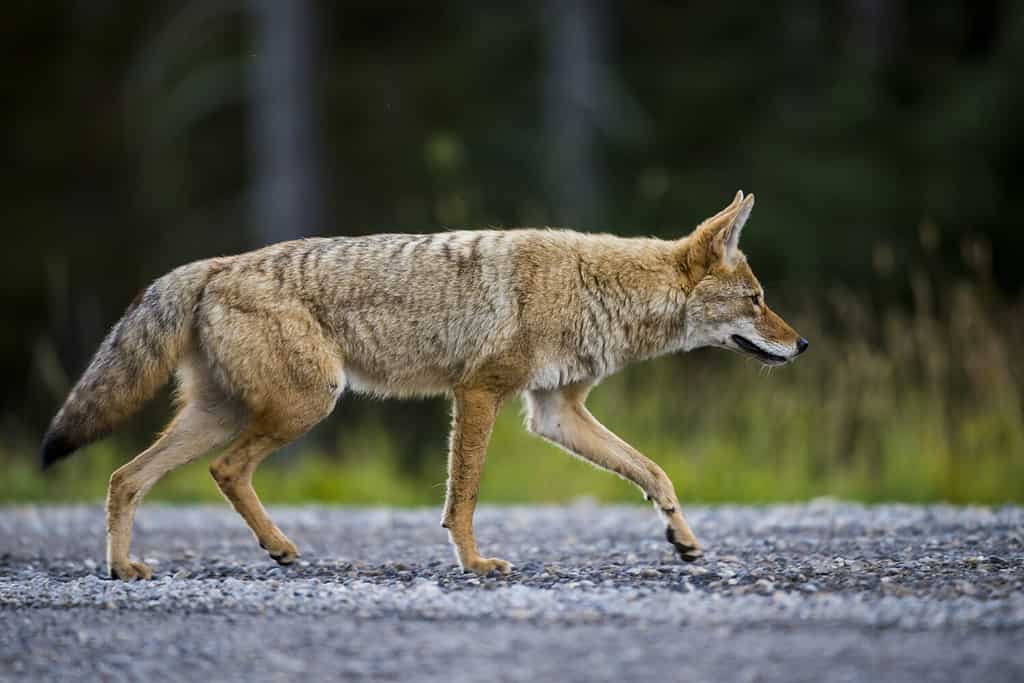
Coyotes outweigh their fox cousins by a considerable margin.
©BGSmith/Shutterstock.com
Coyotes and foxes are actually distant relatives, as they both belong to the Canidae family. Similar to foxes, coyotes are very opportunistic and resourceful — which means they’re also found in a wide variety of habitats. The average coyote stands between 21 and 24 inches tall, measures up to 60 inches long, and weighs anywhere from 30 to 50 pounds. All around, coyotes are bigger than their fox relatives. Foxes and coyotes generally don’t get along — in fact, because they’re bigger, coyotes will hunt foxes if they can. Generally, though, foxes avoid coyote territory.
Fox Size Comparison to a Cat
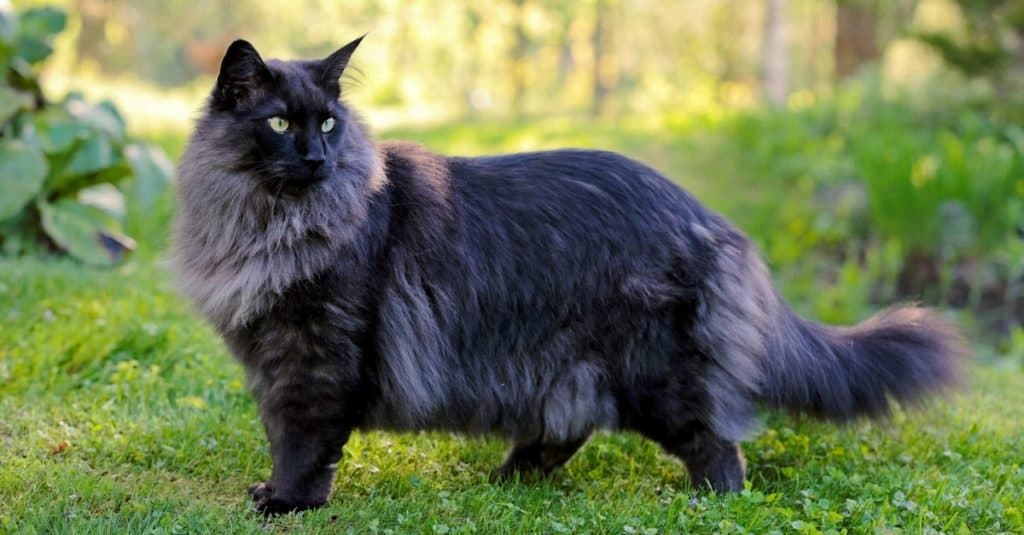
Both Norwegian Forest and Maine Coon cats compare in size to foxes.
©Elisa Putti/Shutterstock.com
Similar to foxes, cats vary greatly in size. Munchkins will never be as big as a Maine Coon. Compared to foxes, though, the big boys of the feline world more than measure up. Maine Coon cats can reach up to 25 pounds, 16 inches tall, and 48 inches long. Meanwhile, Norwegian Forest cats range between 18 and 20 pounds, can reach 12 inches tall, and measure about 36 inches long with their magnificent, fluffy tail. Both of these cat species are comparable to the size of a fox — some Norwegian Forest cats are even known to hunt foxes! However, these are the giants of the cat world. The average house cat can’t compete, coming in at up to 10 pounds, 10 inches tall, and 20 inches long.
Places You’re Most Likely to Encounter Foxes
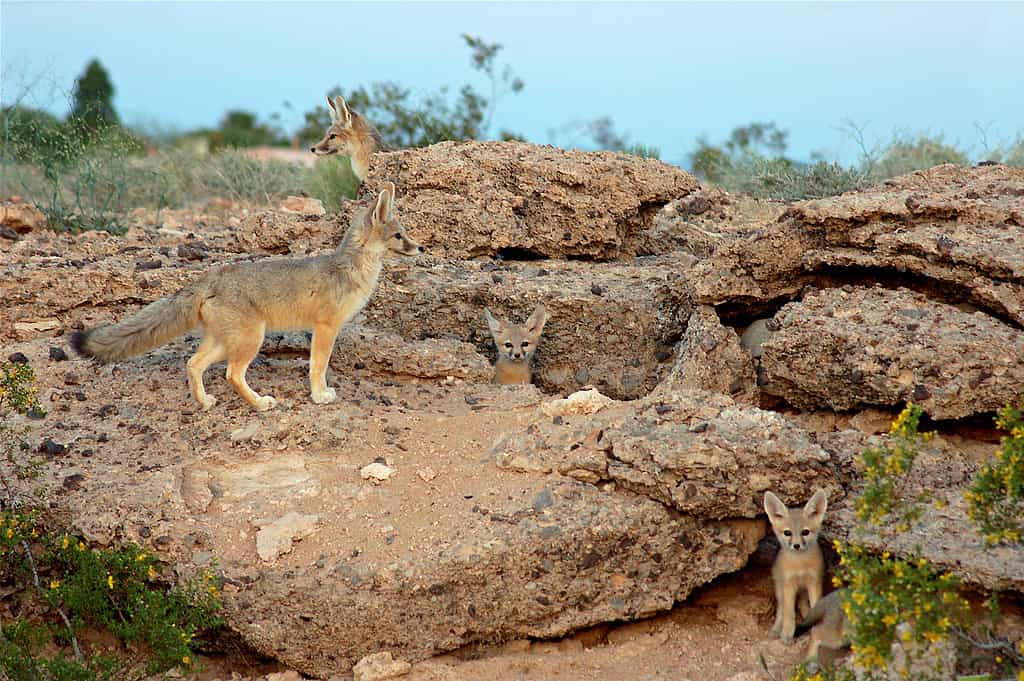
Foxes live nearly everywhere, like this swift fox family hiding in a patch of desert among the suburbs of rural Las Vegas, NV.
©iStock.com/Sherri Cassel
As mentioned above, red foxes have conquered the world as few other species have. They live in the most diverse number of areas and are second only to humans in dispersal areas. As such, no matter where you live, red foxes probably live nearby. Perfectly at home in more than 85 countries throughout Europe, North America, Asia, Australia, and South America, the red fox uses its adaptability to thrive wherever it lives.
Red foxes generally prefer habitats with a variety of prey and food. As omnivores, they eat everything from small animals and bugs to eggs and berries. Mountains, grasslands, woodlands, and even deserts make for perfect fox territory. They have even adapted to live in urban areas with relatively close proximity to humans. Though humans generally consider foxes a nuisance, the spread of humanity leaves many species with no choice but to take what they can.
The photo featured at the top of this post is © Ondrej Prosicky/Shutterstock.com
Thank you for reading! Have some feedback for us? Contact the AZ Animals editorial team.






